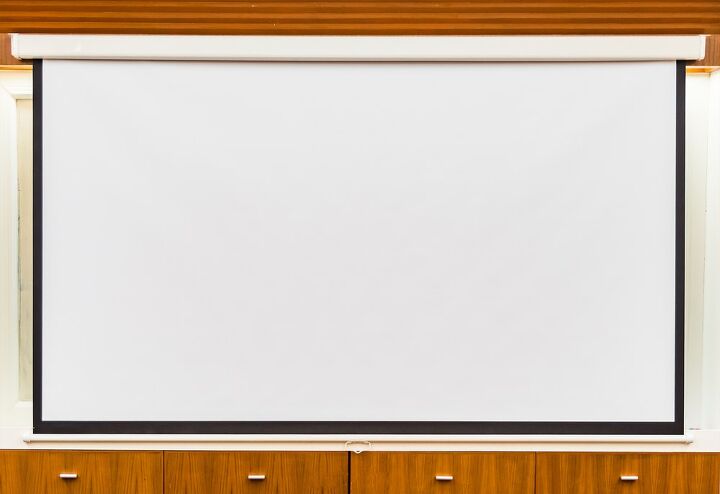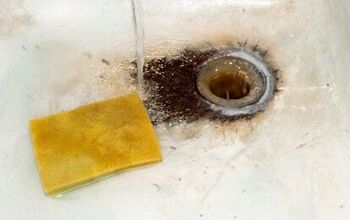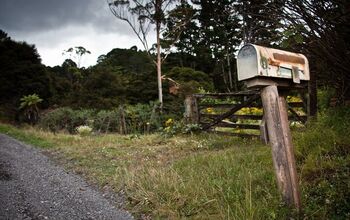What To Do With An Old Projection TV? (Find Out Now!)

The first rear-projection television was made by RCA in the 1940s. It took 30 years for these intriguing pieces of technology to skyrocket in the consumer market. As TV technology evolved, those who invested in the early days have a hard time figuring out what to do with an old projection TV.
Sell your old projection TV and its parts online. Check with your local recycling center or sanitation department to dispose of the TV. Donate it to a vocational training non-profit organization. Make a base for your aquarium, or a stand for your new TV. Use it as a puppet stage for your children, magazine rack, or cocktail bar.
You could take your old projection TV to the landfill, or let it collect dust in the corner of your garage. There are some other options, though, that are worth considering. Let’s learn a bit more about these intriguing pieces of technology that were once the gold standard for entertainment gurus.
Do You Need Waste or Junk Removal Services?
Get free, zero-commitment quotes from pro contractors near you.

What is a Projection TV?
Projection TVs work by projecting images on the front or back of a television screen. Rear-display projection TVs were preferred by most families because the unit fit into a living room or family room. Front-display projection TVs were reserved for in-home theaters that had surround sound, large screens, theater seating, and even popcorn machines.
How Do Old Projection TVs Work?
The key difference between a front-display and rear-display projection TV is that the rear-display is a self-contained unit. A front-display projection TV has a projector and separate screen.
The projector and screen of a rear-display projector TV is located inside a console. There is also a mirror inside the console. The projector emits the image onto the mirror, and the mirror then reflects the image onto the screen.
Are Projection TVs Obsolete?
Smaller console projection TVs are obsolete. The only projection TVs that remain today are those that are used for home theaters. Because the console TVs are no longer produced, it is hard to find parts. People have to rely on salvage yards and online marketplaces.
When Did They Stop Making Projection TVs?
Projection TVs were popular from the 1970s through the early 2000s. Market interest dropped significantly in 2008 when manufacturers introduced new, compact technologies with great picture and sound quality. This is when LCD TVs became the gold standard for homes.
What To Do with an Old Projection TV
An old projection TV still has some value. Selling spare parts online, recycling, salvaging, and upcycling are all good options for what to do with an old projection TV. Let’s look at each of these ideas a little closer.
Sell Old Projection TVs Spare Parts Online
There are some hard-core projection TV enthusiasts in the world, and they are always looking for spare parts. Manufacturers no longer produce parts for obsolete TV models. Look online to see what parts people need, and then remove these parts from your old projection TV. Here are some of the most popular spare parts that should be saved and sold:
- Working circuit boards
- CRT tube deflector cones
- Copper wiring
- Screens
- Cables
- Voltage regulators
- Transistors, capacitors, resistors, and inductors
- MOSFET (multi-oxide-semiconductor field-effect transistor)
- Optical and convex lenses
- Bolts
- Mirrors
Recycling and Salvaging an Old Projection TV
Check with your local recycling center and salvage yards to see if they will take your old projection TV. Even if they won’t take the entire console, there may be parts that they will accept.
Donate to a Local Non-Profit
Non-profit organizations are always looking for equipment that is outside their budgets. If your old projection TV still works, check with them. They can use it to play education videos in their reception area, or host a movie night to raise money.
Be sure to check with non-profits that offer vocational training for your community. They may accept the old projection TV as part of a refurbish and resell program.
Take It to a Thrift Store
Take your old, working projection TV to a thrift store. Bundle it with other equipment that you no longer use, such as an old VCR. You can even get include old video tapes that you no longer use. Clean the unit before you take it to the thrift shop, and spray paint the console. This gives the unit a fresh appearance that appeals to buyers.
Repurpose an Old Projection TV
Your old, clunky, oversized projection TV doesn’t seem to have much potential as it sits, but you’d be surprised. Here are some ways that people have upcycled their old projection TVs.
- Aquarium from the console base
- Cocktail bar with mixes and glasses hidden behind the screen
- Television stand
- Magazine rack
- Puppet stage for children
How to Recycle an Old Projection TV
When projection TV became popular in the 1970s, there were few laws and regulations about dumping hazardous materials. As a result, manufacturers produced projection TVs with materials that we now know are harmful to the environment.
Mercury is by far the most harmful substance that is found in old projection TVs. The mercury is used in the lamps that project images onto the screen. If you take an old projection TV with a mercury lamp to the landfill, the lamp may break open and bleed mercury into the soil and ground water.
Today, manufacturers are taking steps to prevent their old models from getting into landfills and harming the environment. Sony, for example, partners with local recycling companies. Other manufacturers operate their own recycling programs. Call the manufacturer to see what is available for your old projection TV. Also check the US Environmental Protection Agency website for a list of resources for recycling old projection TVs.
How To Get Rid of an Old Projection TV
If you’re not into recycling and repurposing your old projection TV, the landfill is probably the best option. Don’t expect your local sanitation truck to haul away the unit, though. Contact your local landfill, and ask about the process. There may be specific days when you can drop off the TV. You may have to remove some parts of the TV before you take it to the landfill.
Who Takes Old Projection TVs?
Many electronic stores will take your old projection TV when they deliver a new unit. Recycling centers, salvage yards, and your local landfill may take an old projection TV.
How Much Does It Cost to Get Rid of an Old Projection TV?
Having a company remove your old projection TV for you costs $30 to $100. A recycling center may pick up an old projection TV for free.
Related Questions
What’s the safest way to transport an old projection tv?
Wrap the TV in a thick blanket or moving pad. Make sure that the screen is well-protected. Tie the cover with thick cord or bungee straps. Load the TV into the back of a truck, and secure it to the attachment points in the bed.
Can you use the projector of an old projection TV?
You can reuse the projector from a front-display projection TV. The projector for a rear-display projection TV is in several parts and difficult to reuse.
What’s the best size of a home theater room?
For an immersive experience like you have at a regular theater, the room should be at least 15’ wide and 20’ long. You can get a similar effect with a large, high-quality TV in a 100 square foot room. Home theater setups don’t work as well in open floor plans. The room should be enclosed for exceptional sound quality.
Do You Need Waste or Junk Removal Services?
Get free, zero-commitment quotes from pro contractors near you.

Conclusion
Old console projection TVs are obsolete. They have been replaced by televisions that produce higher-quality images and sound in smaller footprints. There are some people who are diehard projection TV fans, and they may be interested in your old unit.
With so many options, such as donating, selling parts, upcycling, and recycling, throwing out your old projection TV is a last resort. You not only lose out on making some money from the unit, but the parts inside the unit are harmful to the environment.

Jennifer L. Eggerton loves being hands-on, whether it's with a home DIY project, making repairs, re-decorating a room, or keeping life organized. She enjoys helping people by sharing her knowledge, insights, and experiences, as well as her lessons learned. In addition to her work as a writer, Jennifer is a Jeep® overlander, self-published author, and nature photographer who loves being outdoors.
More by Jennifer Eggerton



























